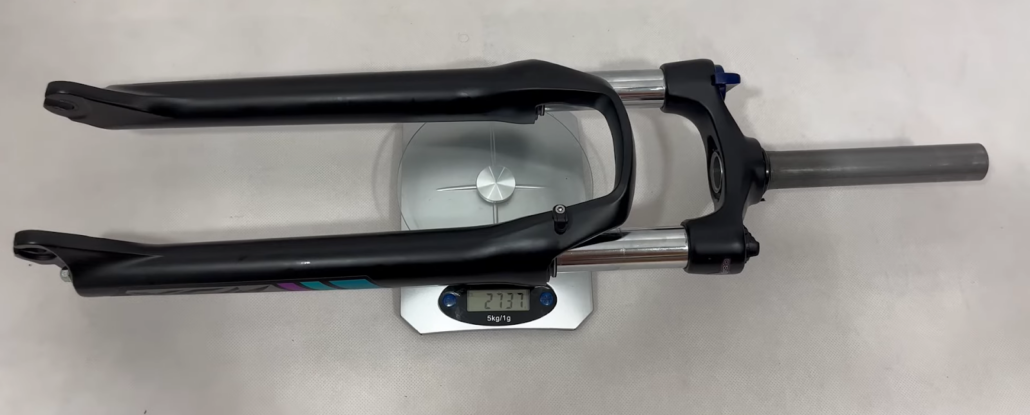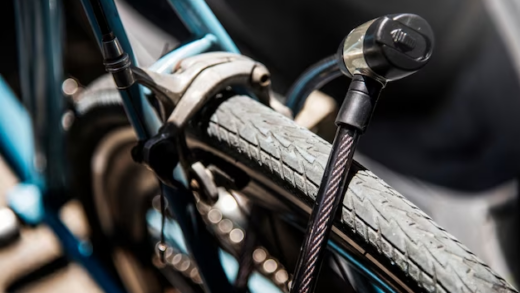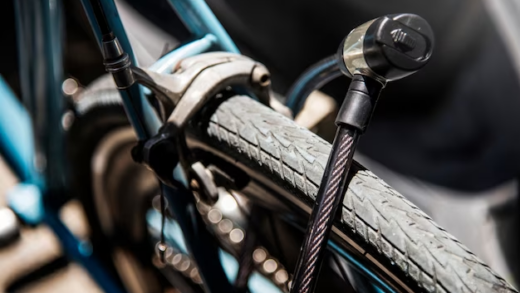Shattering the tapered structure of your bicycle’s frame could result in being stranded with a bike that’s no longer operational. However, if you possess a straight fork, it’s possible to adapt it for use with your tapered frame.
So, what steps are involved in affixing a straight fork to a tapered frame?
Initially, you will require both a top cup and a bottom cup. Opting for a ZS49/28.6 as the top cup and an EC49/40 as the bottom cup can be advantageous. Start by removing the tapered frame, then proceed to attach the bottom cup onto the linear frame. Subsequently, insert the fork into the frame and proceed to secure the top cup. With these steps completed, your setup should be ready for operation.
The aforementioned is a succinct overview of the procedure. For a more in-depth walkthrough, you can delve into the detailed guide provided below!
Can a Straight Fork be Used on a Tapered Frame?
Exploring possibilities with your beloved bicycle is undeniably enjoyable, isn’t it? If you happen to possess a straight steerer fork, you have the opportunity to integrate it with a tapered frame, and conversely, the opposite approach is also feasible.
In precise terms, a straight steerer fork is distinct from a tapered fork. A non-tapered fork aligns with both the top and bottom head tube at 1-1/8″ dimensions. In contrast, a tapered fork is designed for a 1.5″ taper, comprising a 1-1/8″ top and a 1.5″ bottom measurement.
When it comes to specialized requirements such as material and load-bearing capabilities, it might be necessary to create a custom blueprint in a specialized shop. Due to its uniform and non-tapered structure, the column can be trimmed to various lengths and employed for constructions of varying heights. Regardless of the column’s length, both the cap and base will be compatible.
A tapered head tube is characterized by its conical lower end. To accommodate tapered head tubes, forks with a 1-1/8″ wide top and a 1.5″ wide bottom are necessary.
Conversely, a straight steerer fork can be adapted for use in a 1.5 tapered frame through the use of straightforward adapters. Similarly, a 1.5 tapered fork can be integrated into a head tube of a 1.5 non-tapered frame. However, it’s not compatible with a 1 1/8″ straight steerer frame.
Now, let’s delve into the process of effectively incorporating your straight fork into a tapered frame. This knowledge will also aid in distinguishing between dual crown and triple crown forks.

Simplifying the Process of Fitting a Straight Fork into a Tapered Frame
To properly install your 1 1/8″ straight fork within a tapered frame, you’ll require specific headset measurements. Once you have these measurements, the subsequent steps for replacement are notably straightforward. Let’s explore how to effectively achieve this integration.
Essential Components and Their Importance
Obtaining the suitable top cup for your frame entails selecting the ZS49/28.6, a 1 1/8″ straight-to-tapered adapter. This choice is pivotal for proper compatibility.
- ZS49/28.6: The designation ZS49/28.6 holds meaning within its components. “ZS” stands for zero-stack, signifying that only a minor section of the headset cup extends beyond the head tube. This arrangement is due to the bearing being housed within it. The numeral “49” denotes the upper head tube type, likely representing its diameter in millimeters. Lastly, “28.6” references the diameter of the steerer in millimeters.
In contrast, the bottom cup suitable for your frame is denoted as EC49/40. This code represents a non-tapered fork adapter.
- EC49/40: EC, which stands for external cup, holds the key to understanding EC49/40. This term signifies that the bearing is positioned on the exterior of the head tube, resulting in more of the headset cup being visible. The “49” designation pertains to the lower head tube type, and “40” specifies the diameter of the crown race seat in millimeters. This is the location where the crown race fits into the bottom cup, securely anchoring the steerer.
When seeking the appropriate headset, these measurement indicators should be readily apparent. It’s unnecessary to fret over the depth of the headset within the head tube. The figures you encounter for cup stack height likely correspond to measurements indicating how much extends beyond the head tube.
Stack height assumes a pivotal role in determining the optimal length for your fork’s steerer. An insufficiently short steerer will not extend adequately to accommodate attachment of your stem.
Despite tapered head tubes typically being shorter than their straight 1 1/8″ counterparts, you should find your fork’s steerer length satisfactory.
Our fourth recommendation for various top and bottom cups:
- Cane Creek 40-Series Traditional 44 Race Bottom Headset OE;
- Cane Creek 40 ZS44/28.6 EC44/40 Headset Black;
- Cane Creek 10-Series External Cup.
Installing a Straight Fork in a Tapered Frame
Placing and aligning a straight fork within a tapered frame is a straightforward endeavor. You only need to adhere to these sequential steps, and the process will be accomplished with ease.
Step 1: Remove the Existing Tapered Fork
- Begin by loosening the stem bolts to detach the old fork;
- Proceed to loosen and eliminate the top cap;
- Subsequently, dismantle the stem, spacers, and headset cover;
- This will allow you to smoothly detach the fork from the frame.
Step 2: Secure the Bottom Cup onto the Straight Fork
- Assuming you have acquired the EC49/40 bottom cup, position it onto the fork and assess its alignment for an even fit;
- For the subsequent installation stages, firmly affix the cup onto the fork. Employ a standard race crown driver along with a hammer to fit the bottom cup onto the fork;
- Exercise care when tapping the race crown driver with the hammer. Employ gentle and uniform taps until the bottom cup achieves a snug fit.
Step 3: Implant the Fork into the Frame
- Before inserting the fork into the frame, apply a layer of grease onto the bottom bearing. This will facilitate the smooth movement of the cap along the frame. Proceed to insert the fork into the frame;
- Given that the frame adopts a tapered configuration, a straight fork might not directly align. Thus, the utilization of the top cup becomes necessary. Situate the top cup onto the upper side of the fork. The fork should now exhibit a secure fit;
- Next, reintroduce the stem, spacers, and headset cover. Subsequently, insert and tighten the top cap. Finally, secure the stem bolts.
By following these steps, you will have effectively installed a straight fork within a tapered frame. And remember, proper maintenance of your bicycle is essential.

FAQ
Indeed, you can assert that a tapered fork holds certain advantages over a straight fork. A key benefit of a tapered steerer tube lies in its conical structure, which enhances resistance against bending due to forces from the bottom-up direction. This conformation contributes to a firmer feel in the fork, particularly in the fore/aft dimension.
A tapered frame design yields a stiffer front end, resulting in heightened responsiveness. Additionally, the head and down tube could offer an enhanced foundation for accommodating more advanced fork setups. The extent of these advantages may vary based on the specific frame, but overall benefits are evident.
Yes, a tapered headset surpasses a non-tapered headset in terms of performance. The tapering design introduces substantial rigidity while incurring a minimal increase in weight. In contrast, a non-tapered headset features a straight steerer tube, which is available in two sizes: 1-1/8 inch and occasionally 1.5 inches (less common). The lower end of the taper measures 1.5 inches, while the upper end maintains a diameter of 1-1/8 inches.
Conclusion
We trust that these responses have addressed all your inquiries regarding customization. You’re now equipped with the knowledge to successfully integrate a straight fork onto a tapered frame.
Should you have any further questions, feel free to share them in the comments section. We’ll strive to promptly provide you with optimal solutions.
In the meantime, enjoy your biking adventures!






